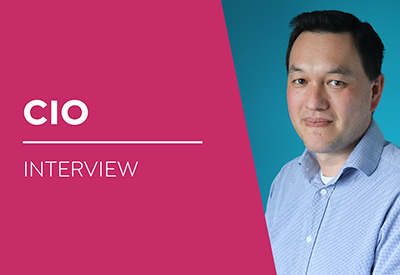CIO Interview: Developing a detailed business case
Sunday, 13 February 2022
VIEW - Patrick Ng - Southern DHB Chief Digital Officer  I commenced in the Southern DHB (SDHB) chief digital officer role late last year after having spent 4 years as the DHB’s chief operating officer. I commenced in the Southern DHB (SDHB) chief digital officer role late last year after having spent 4 years as the DHB’s chief operating officer.
It is an exciting time to join the digital team and our focus is on completing a Treasury Better Business Case, Detailed Business Case which will lead to a significant investment in digital infrastructure and an equally important investment in digital solutions.
A Digital Hospital
Originally, SDHB started to develop Its Indicative Business Case for digital infrastructure because the New Dunedin Hospital did not have digital infrastructure within its scope.
The digital infrastructure component of our programme is vital in order that our New Dunedin Hospital can open and operate as intended, starting with our new Outpatient Building in 2025 and then with our Inpatient building in 2029.
As the team started to develop the Indicative Business Case they quickly realised that the potential to operate the new hospitals as contemporary digital hospitals would not be realised without a corresponding (and significant) investment in digital solutions.
A significant amount of thought and design work then went into the digital solutions that need to accompany the digital infrastructure if the New Dunedin Hospital is to reach its full digital potential and this was included in the finalised Indicative Business Case (IBC).
Cabinet approved the IBC last year and as part of the approval process SDHB were approved to progress to the next stage, which is the development of a Detailed Business Case (DBC).
Getting into the details
Since I joined, late last year, a key focus for the team and me has been the development of our DBC, which we hope to submit to Government in early March.
We have given a lot of thought to our DBC and whilst the DBC has been trimmed to ensure that it is readable (it runs to 100 pages with about 50 pages of appendices), we have also developed a compendium document to accompany the business case which includes our designs and blue prints and the compendium document runs to several hundred pages.
Our detailed business case presents 3 key options:
- A minimum viable product. This option would allow the New Dunedin Hospital (first the outpatient building and then the inpatient building) and includes all of the core digital infrastructure. However, minimum digital solutions would be provided and the ability to enhance the Southern Health System would be minimal.
- Digitisation of new Dunedin Hospital, which requires digitisation of the interactions with primary and community providers. This option allows new Dunedin Hospital to fulfil our digital hospital ambitions but the digital solutions we purchase and implement would not be scaled across the whole of the Southern Health System. This option, whilst cheaper, could lead to a digital divide between Dunedin and the rest of the Southern Health System.
- Digital Transformation of the Southern Health System. Under this option, we would implement core infrastructure uplifts and full digital solutions across the Southern Health System, including to our rural hospitals and to Southland hospital. This is our preferred option.
Full transformation
The preferred option would result in a full digital transformation and we have developed a capabilities model to help us to guide the investment that would be necessary.
Clinical digital solutions would be likely to include consumer engagement portals, a contemporary electronic health record, which captures source data in useable data fields, and master scheduling tools.
We would also implement digital solutions which would enable greater data insights. As a former COO (and a former deputy government statistician a long time ago) I am particularly excited by the opportunities that greater data insights would present to us.
We are developing our business case with several considerations and key principles in mind.
Included in these are that our capabilities will be achieved using interoperability in a manner that is consistent with the HIRA business case and its principles, that we will use digital solutions to improve equity outcomes for our Māori, Pasifika and rural populations and that the solutions we implement will make it easier and more efficient for our front line clinicians to access the information they need when they need it.
Another key principle that we have adopted is one of working closely with our South Island colleague DHBs. We will ensure that the solutions we procure are scalable so that our colleagues in the South Island are able to adopt them, for example, when Nelson Marlborough DHB commence with their hospital redevelopment in the coming years.
This is an exciting programme and the team and I are energised by the opportunity to leave the legacy environment behind and to design solutions, almost as if from a blank sheet of paper. We look forward to providing you with regular updates in the future.
If you want to contact eHealthNews.nz regarding this View, please contact the editor Rebecca McBeth. Read more VIEWS
Return to eHealthNews.nz home page
|